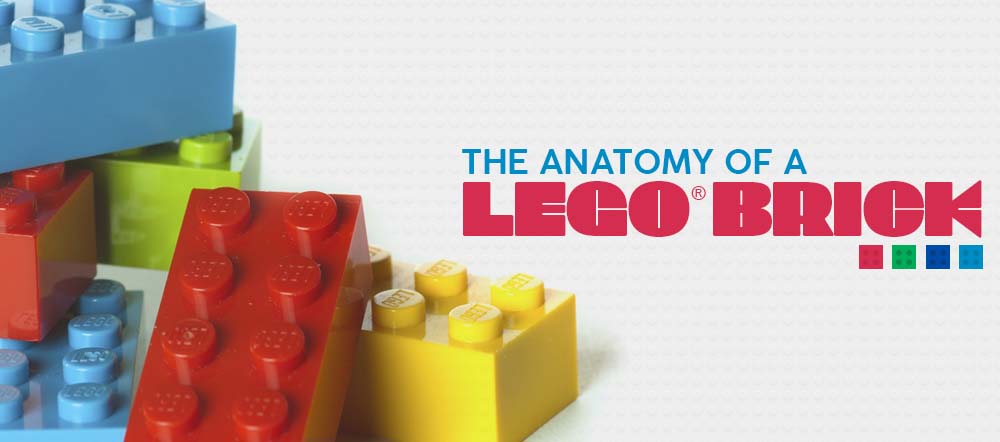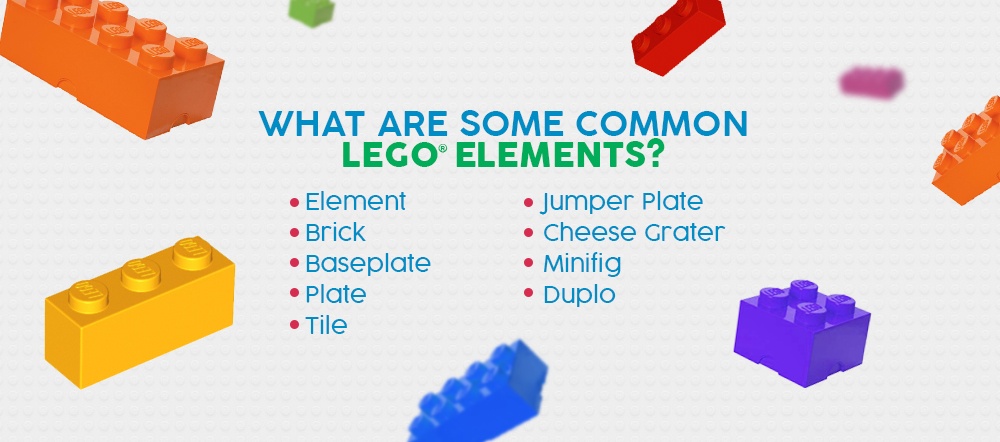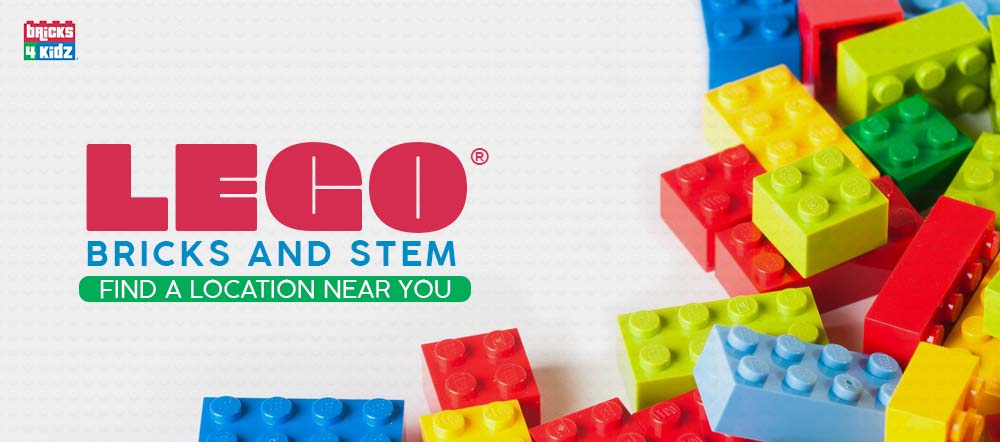
The signs are obvious: LEGO items spread all over the floor or table. Wish lists full of new kits and pieces. Walking gingerly through your child’s room to avoid stepping on those hard plastic bricks that seem to blend in with the carpet.
If any of this sounds familiar to you, then you’re probably the parent of a LEGO® kid, otherwise known as a brilliant, creative child who loves to build. If the world of LEGO® is new to you, then you might not be familiar with the terminology used for LEGO® bricks and the other parts.
Besides being a great way to engage in conversation with your child enthusiast, knowing the official LEGO® Brick names, as well as the other elements involved in creating, is also helpful when you’re ordering additional parts or trying to replace a piece that’s been lost.
So let’s get started with our short and sweet LEGO® brick dictionary.
What are the Bumps on LEGO® Bricks Called?
The bumps on a LEGO® brick are called “studs.” These are the parts of the brick that allow it to connect with other pieces. Studs are also used for identifying bricks when ordering certain parts or asking a friend for a loaner piece.
LEGO® bricks are often referred to by the number of studs they have. For example, a brick that has two studs running along the short side and four studs down the long side would be called a “2×4” brick. If you need a piece like this, you’d search online for its dimension. Even tiles — bricks that don’t have studs on top — are also commonly referred to by the number of studs that would fit onto their surface.
On the underside of a LEGO® Brick, you’ll find the “anti-stud,” which is the tube that serves as the receptacle for the studs on the piece you’re connecting. LEGO® bricks are connected by inserting the studs of one brick into the anti-studs of another brick. They are designed to lock together securely so that they don’t come undone later on in the building process.
What are Some Common LEGO® Elements?

Knowing the term “stud” is the first step when it comes to LEGO® lingo, but you’ll want to expand your vocabulary beyond that. When it comes to terminology for LEGO® Bricks, there’s more than just the studs. Knowing the different categories of LEGO pieces is important to buying — and building — all sorts of creations.
1. Element
When you hear a LEGO® builder refer to an “element,” they’re talking about a piece of LEGO®, such as a brick or a tile of some kind. For example, your child might be looking for a blue 2×4 element — meaning a 2×4 brick.
2. Brick
A brick is the basic building block of LEGO®. They vary in size and color depending on the sets you own. If you’re referring to more than one LEGO® Brick, the plural term is “LEGO,” not “legos” as many people wrongly assume.
3. Baseplate
A baseplate is a foundation for any LEGO® creation. It’s the thin plate that your builder will use to set up whatever they’re in the mood to create. Baseplates have no bottom connections, they only have studs on their surface. They are designed to stay level on the table or floor your child is using as a creative space. You can find plain baseplates or, for a greater challenge, you can purchase baseplates with designs or raised parts on them to make whatever you’re constructing look more realistic.
4. Plate
“Plate” is the term used to refer to any connecting LEGO® piece that is 1/3 the height of a LEGO® brick.
5. Tile
A tile is a LEGO® brick that doesn’t have studs on its surface. It’s used as a finishing piece to improve the look of models by smoothing out the tops of buildings or floors inside structures.
6. Jumper Plate
A jumper plate is a plate that has only one stud in the center. It’s typically used for half-stud offset building, which basically means it’s used in cases where a builder wants the freedom to create without being confined by the standard alignment of studs on traditional plates and bricks.
7. Cheese Grater
The “Cheese Grater” looks like a cheese grater. Approximately 2/3 of a brick — two plates high — the Cheese Grater has an 18-degree slope and 1×2 studs.
8. Minifig
Minifigures or minifigs have been a beloved part of LEGO® sets for over 40 years. They are the small figurines that are included with many sets.
9. Duplo
Duplo is a great way to introduce your child to LEGO® before they have the motor skills or patience to spend time with smaller LEGO® pieces. Duplo bricks contain a lot of the same features as LEGO® elements, but they’re larger and easier to put together and pull apart. They are a great option for preschool-aged builders.
What are LEGO® Bricks Made Of?
Anyone who’s ever stepped on a LEGO® brick knows firsthand that they’re painful. Why does stepping on a LEGO® brick hurt so much?
LEGO® Bricks are made from Acrylonitrile Butadiene Styrene (ABS), an industrial-strength plastic that’s also used to make luggage and interior car parts. The material doesn’t fade or warp over time and it holds its color and shape well. Dyes can be added to the bricks to make the ABS different colors. The durability of the material is also what makes it painful.
LEGO® Bricks are designed to withstand being stepped on by children. LEGO® runs a series of quality tests on its pieces, including one test that simulates an approximately 110-pound child stepping on a LEGO® Brick. The ultimate goal has been — and continues to be — making elements that will stand up to just about anything. And to make sure they do that, the plastic has to be strong. There’s no give in a LEGO®. So when you step on it, you’re going to feel its resistance to your weight each and every time.
LEGO® Bricks and STEM
If you have a little builder at home, then consider finding a local Bricks 4 Kidz program. At Bricks 4 Kidz, our goal is to show children that learning can be fun. To do this, our programs are designed to combine LEGO building with STEM principals — science, technology, engineering and mathematics — all with the intention to encourage discovery in a fun, low-pressure environment. We offer a wide range of workshops, after-school classes, camps and more targeted toward children ages 3-13.
Find a location near you and register your builder for one of our programs today.
